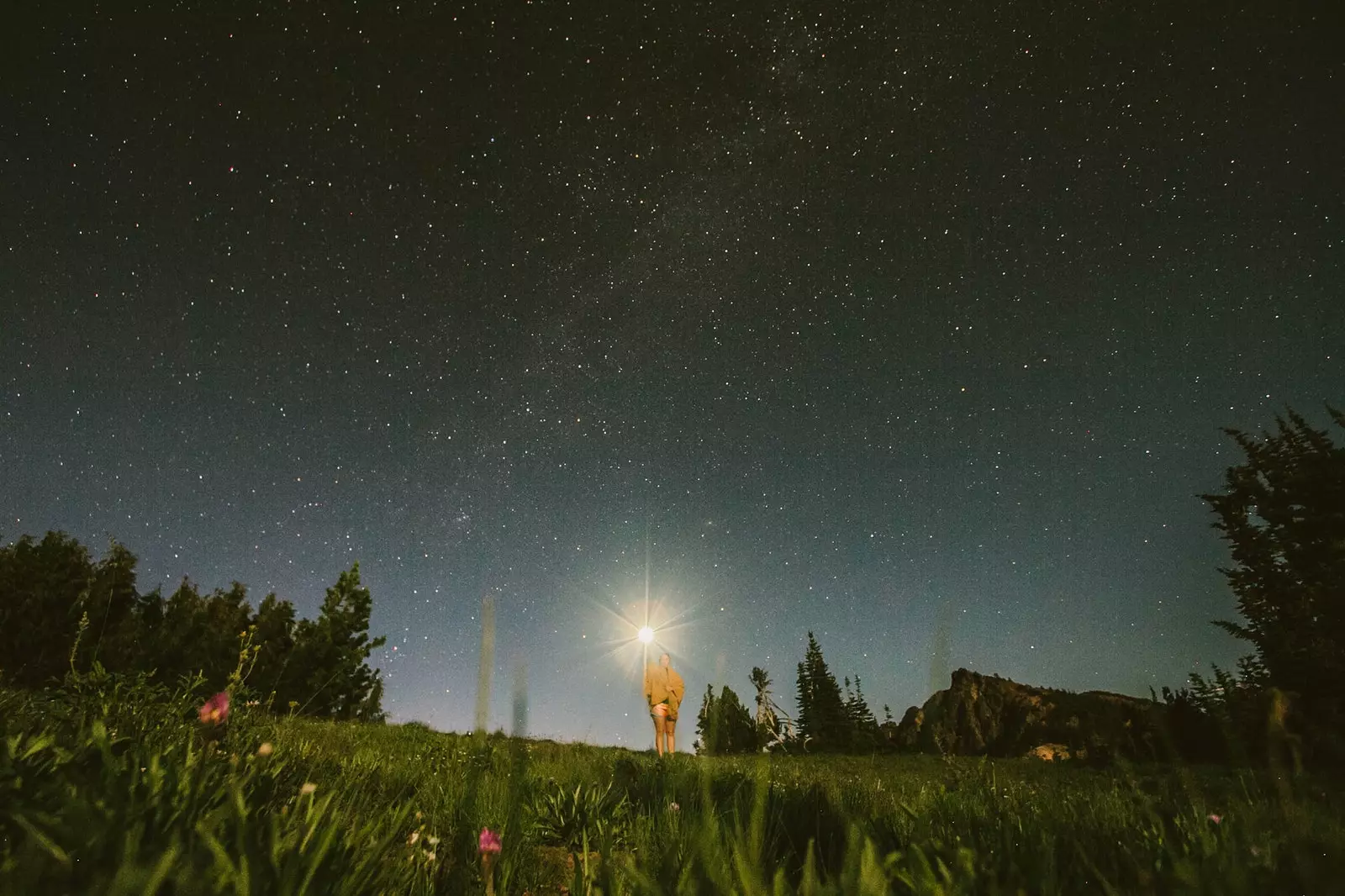
Home guide to practice astrotourism
This weekend we can enjoy the last meteor shower of the year: the geminids . Before getting into the matter, let's start to define the astrotourism so it is not. This mode of space travel it doesn't include intergalactic cruises, rocket flights to Alpha Centauri, or guided tours of the most photogenic craters on Jupiter's moons. T We are still not at that point, despite it.
Astrotourism is, on the other hand, walk around the firmament with your eyes . It is embarking on a astronomical expedition by means of a simpler or more complex observation. In essence, choose a clear night and look at the sky.
"Astronomical tourism is everything that consists of visiting, alone or in company, a place where you can enjoy a good night sky , regardless of your knowledge in Astronomy". This is how he explains it Antonio Perez Green , science communicator specializing in Astronomy and Space Sciences and author of the Astrometric blog.
As he himself says, it is not necessary to have a professional team to practice astrotourism . With his collaboration we have elaborated this home guide for contemplate the immensity of space from Earth.
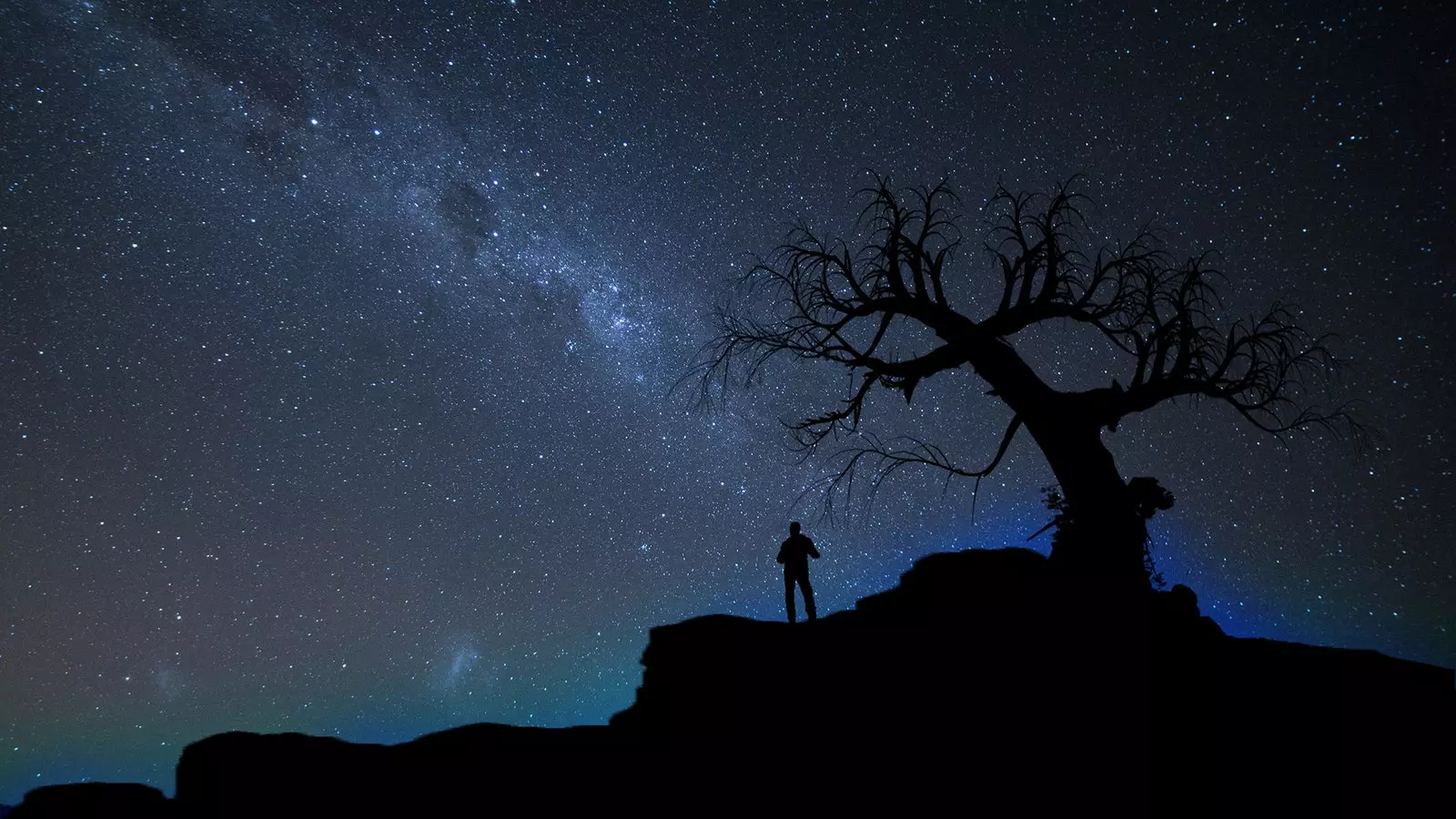
Enjoying astrotourism
MATERIALS: BEYOND BINOCULARS
It doesn't matter if you have no idea or if it's your first time. The most important thing, according to Antonio, is that always carry a good book with you . "To understand the sky in depth, the first thing to do is to see the sky with the naked eye." He recommends getting the sky guide of Procivel, edited every year; the books Observe the sky with the naked eye or with binoculars (Larousse) and A walk through the stars (Milton D. Heifetz and Will Tirion, Akal) ; Y Astronomy , the only Spanish paper magazine on these issues.
The binoculars , although they seem elementary, you should only use them when you already have some ease in looking at stars and planets. It is more advisable and start with basic binoculars either even with the naked eye , and later resort to larger ones coupled to a tripod or yet small telescope.
Other instruments to have on hand are a compass, a celestial map, a map of the sky, a plastic or a canvas to place under the telescope to avoid losing any object that falls to the ground and some approved glasses for eclipses (Very important if you don't want to char your retinas!) . On your mobile it will be good for you to download apps like SkySafari, Exoplanets (Android), Exoplanet (iOS), SoHO Viewer (iOS), and Images of the Sun from SOHO (Android).
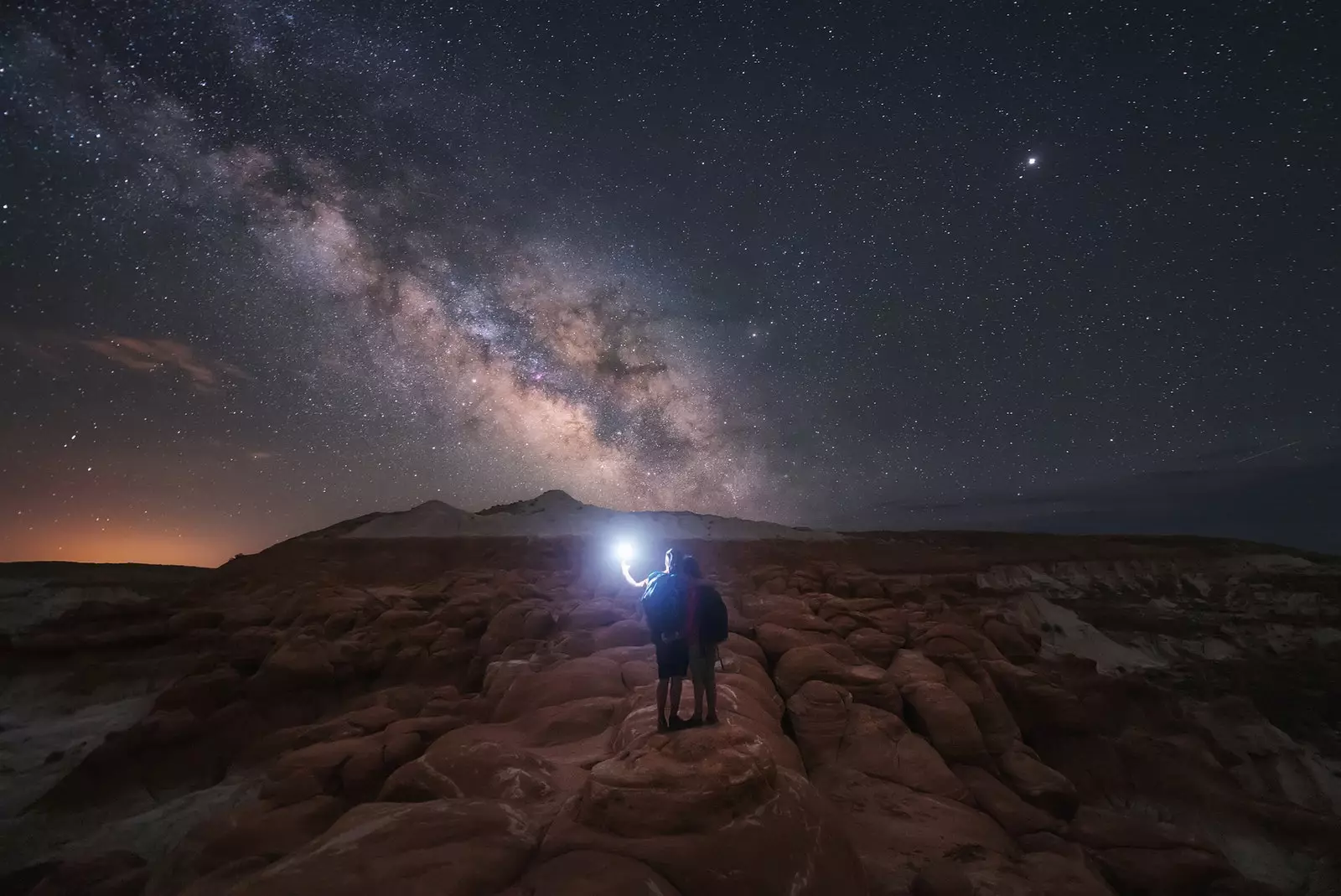
You don't need a professional team to enjoy the sky
PRECAUTIONS: THE ESSENTIAL FOR YOUR WALK THROUGH SPACE
Always, always, always wear warm clothes. “ You have to put yourself in the worst ”, says Antony. even to see the perseids in august it is necessary to have clothes with which to cover .
When you go out to practice astrotourism, think as if you were going on a hike in the mountains . Take second skins (such as a thermal shirt), hiking boots and thin but warm gloves.
Don't skimp on food or drink : Carry plenty of food and fluids. Don't forget about the medicine cabinet with a first aid kit and put one in your backpack flashlight, a front light, an external battery for the mobile (the cold depletes the charge very quickly) and a sleeping bag in case you feel like taking a nap under the stars.
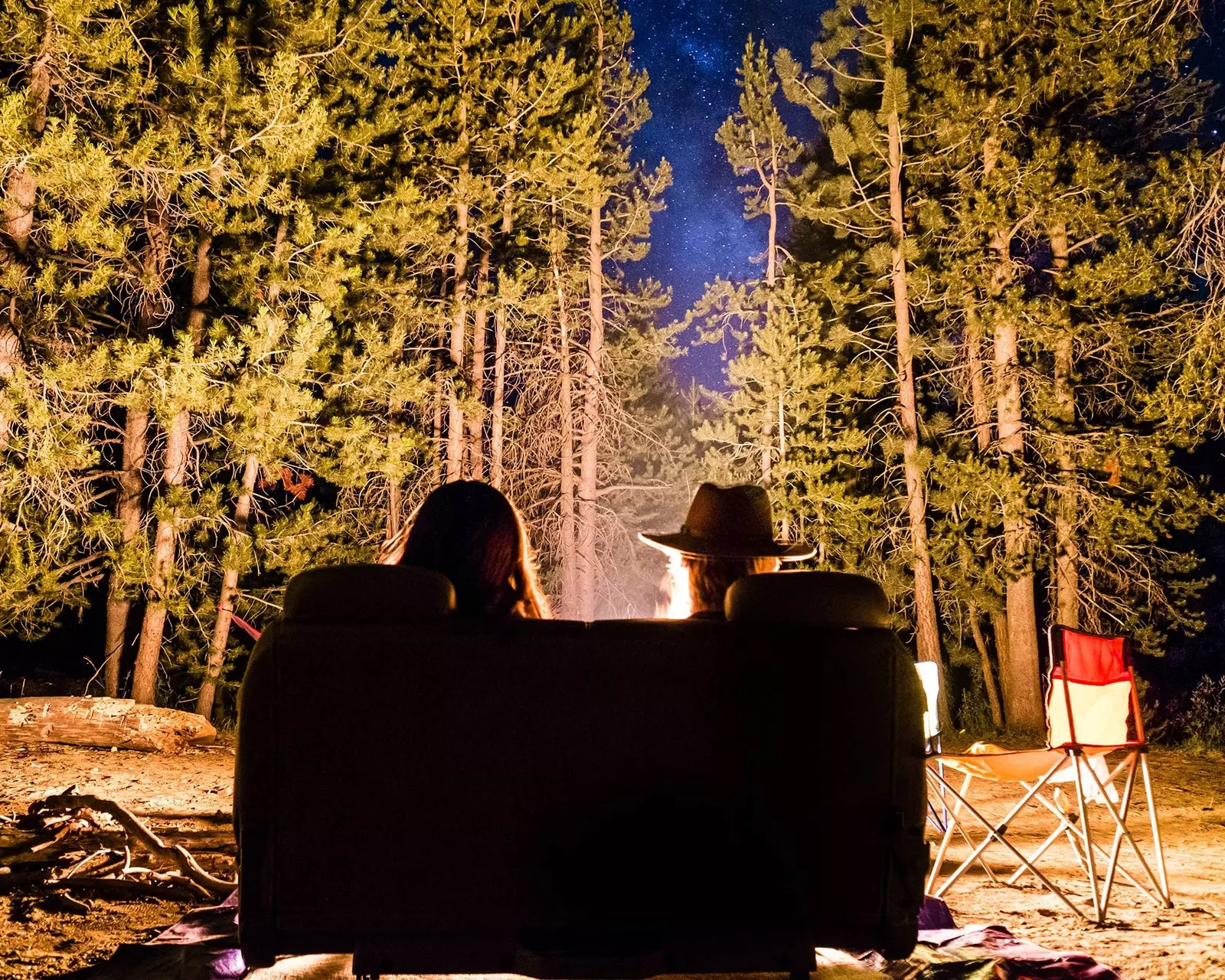
equip yourself
The creator of Astrometric insists that never look at the sun without approved protection . And, since you are, don't leave the cream alone at home r if you are going to do daytime astronomy.
Never go alone and, if you still decide to go alone, always let someone know where you're going and when you'll be back . Finally, Antonio reminds us that “ we must leave nature the same or better than we found it ".
ASTRONOMICAL ORIENTATION FOR BEGINNERS
Orientation is key to know what are you looking at , and it all starts at Polar Star . To locate it, the simplest thing is to first find the Ursa Major Chariot , one of the most famous constellations, the one that is shaped like a saucepan. If you mentally extend the stars on the front of the “dipper” five times upwards, you will find the North Star, which will indicate which way is north.
The Cassiopeia constellation it is also easy to locate and serves as a clue to orientation. This is shaped like a 3 or M and its opening points towards Polaris. You will see that when you have more experience you will learn to locate yourself looking at the moon or at certain astronomical alignments. ¡ It's a matter of practice!
TIPS FOR CHOOSING THE PLACE FROM WHERE TO LOOK AT THE SKY
Stay away from urban centers: if you have the chance, get out of town , that's why you're on an expedition. And put the orography of the terrain at your service: if a mountain covers light pollution, all the better. Know the chosen site in advance , in daylight, is a fantastic idea, because it will allow you to plan how you will spend the night and identify anything that may hinder your activity. In the page Starlight Foundation website You can find suitable places to do this type of tourism.
It will be useless to do all this if we do not turn off all the lights around us. Our eyes take fifteen to twenty minutes to adjust to total darkness. but, as Antonio warns, it only takes a flash to dazzle us and have to start over. So park far away and be careful even with your mobile screen! Red filters for the flashlight prevent this from happening.
HOW TO TAKE PHOTOS OF THE NIGHT SKY?
No one wants to witness an astronomical phenomenon and not be left with a souvenir image. If you get along well with the SLR camera, you can get started in circumpolar or star trail photography by taking a long exposure photo for which you must s set aperture and ISO to night conditions.
Wide-field astronomical photography is achieved in a piggy back configuration, which consists of placing the camera parallel to the telescope. It also can use the telescope as if it were the objective of a reflex camera . With these techniques you can make bursts of photos every few minutes and then "add" them with software. Another option is to increase the exposure for a long time. You can too play with detailed photos and time-lapses.
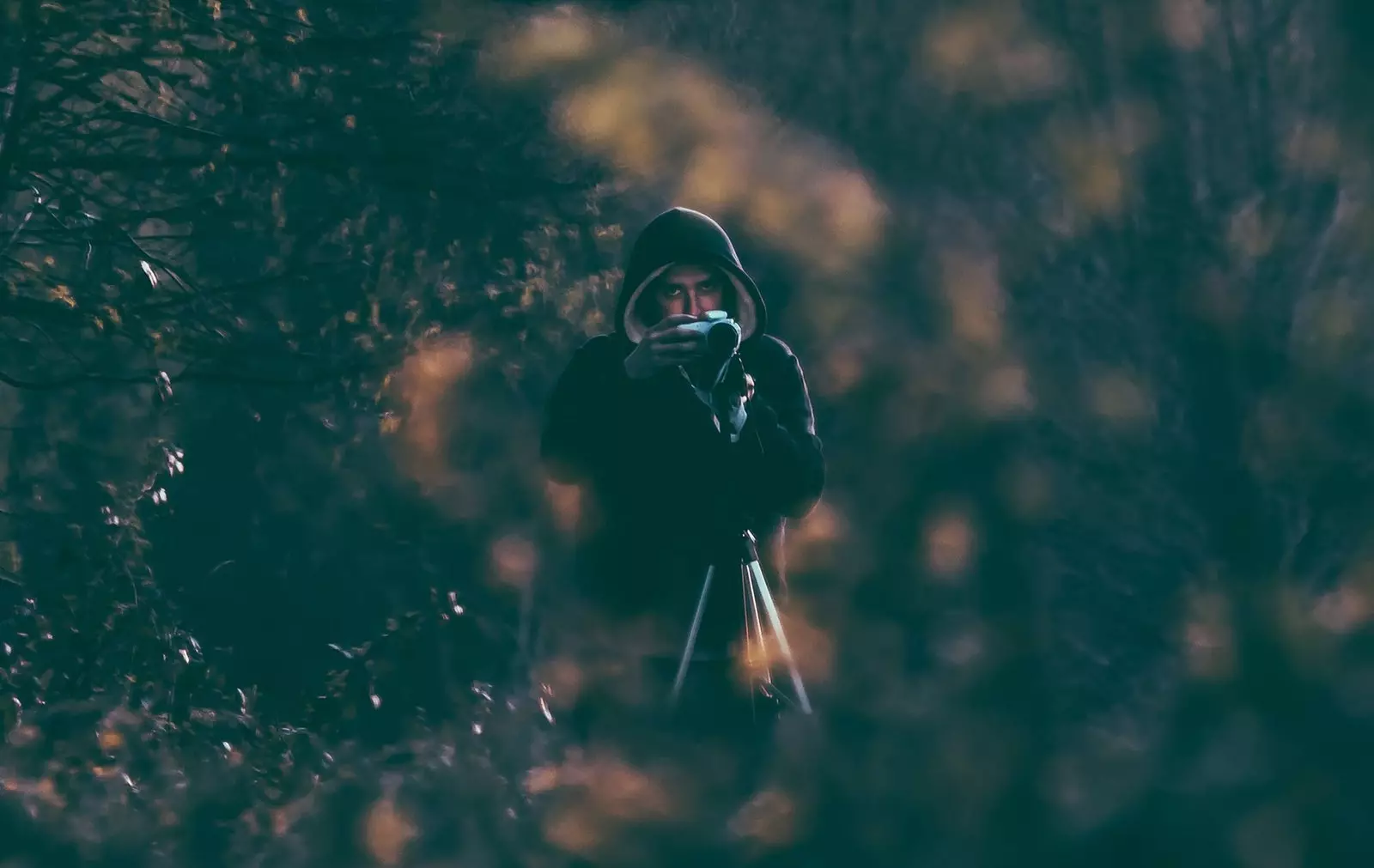
How to take night and sky photos
Don't worry if you don't have a camera: the mobile can be enough. Place it on the telescope or on a surface pointing up. Lower the brightness of the screen, activate the night mode and set the timer. I'm sure you'll get a more than decent result.
HOW AND WHERE TO START: BEST AMONG FRIENDS
In Spain there are numerous astronomical groupings to share this hobby with more people. The Federation of Astronomical Associations of Spain has a list with more than sixty groups in different locations where you can find the one that suits you best. The associations usually organize observations, introductory and astrophotography courses, talks and different activities.
On your own you can visit planetariums and science museums , such as the ** Madrid Planetarium ** and Cosmocaixa in Barcelona . There is also no shortage of scientific outreach programs, such as those of the Science and Innovation Week and the European Night of Researchers and Researchers.
At home you can always continue browsing Astrometric, the blog where Antonio spreads his knowledge about space in an accessible way for everyone. The more you learn about astronomy, the more you'll enjoy the night sky!
